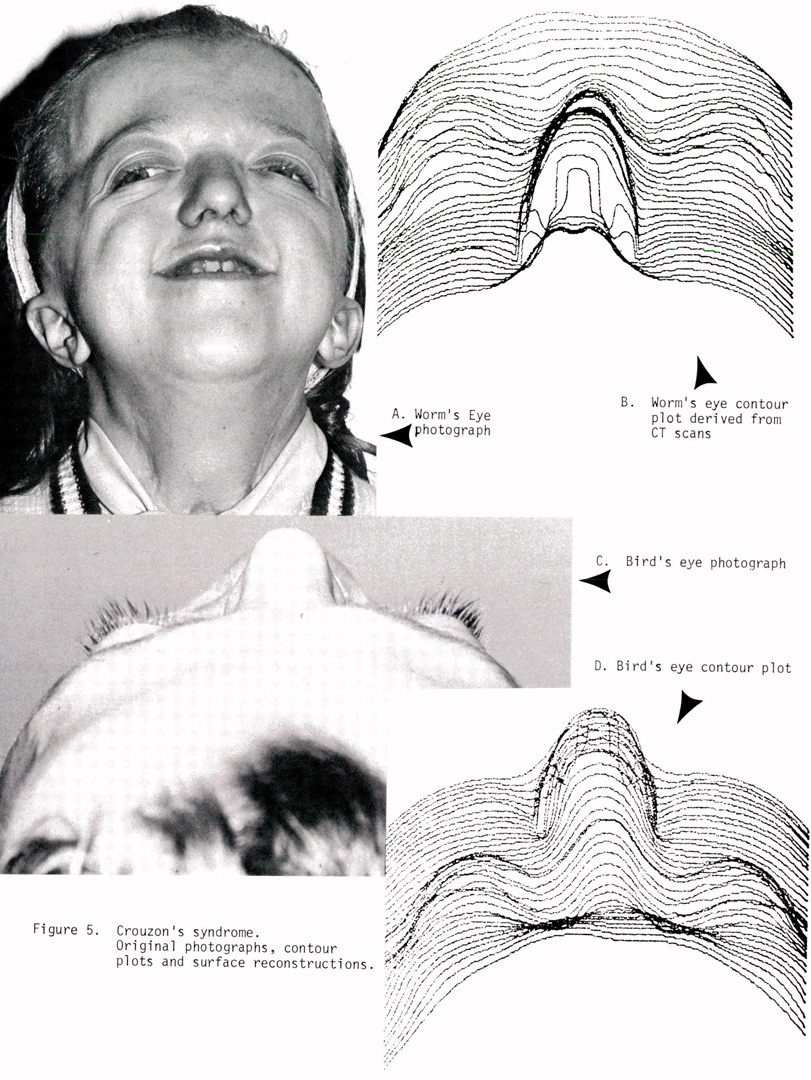“Three dimensional computer graphics for craniofacial surgical planning and evaluation” by Vannier, Marsh and Warren
Conference:
Type(s):
Title:
- Three dimensional computer graphics for craniofacial surgical planning and evaluation
Presenter(s)/Author(s):
Abstract:
The understanding of complex craniofacial deformities has been aided by high resolution computed tomography. Nonetheless, the planar format limits spatial comprehension. Reconstruction of fully three-dimensional bony and soft tissue surfaces from high resolution CT scans has been accomplished by a level slicing edge detector coupled to a hidden surface processor without perspective depth transformation. This method has clarified aberrant anatomy, facilitated surgical planning and improved quantitative postoperative evaluation in more than 200 clinical cases. Advanced computer aided design techniques, originally developed for the manufacture of military aircraft, have been applied to the planning and evaluation of craniofacial procedures as well. This allows the application of interactive digital graphic technology to surgical patient management.
References:
1. Kawamoto H. The kaleidoscope world of rare craniofacial clefts: Tessier classification. Clinics in Plastic Surgery 1976; 3:529-572.
2. Artzy E, Frieder G, and Herman GT. The theory, design, implementation and evaluation of a three-dimensional surface detection algorithm. Comput Graph & Image Proc 1981; 15:1-24.
3. Herman GT Image reconstruction from projections. New York: Academic Press, 1980:260-176.
4. Nagao M, Matsuyama T. Edge preservation smoothing. Proc International Joint Conference Pattern Recognition, Kyoto, Japan, 1978;IV:518-520.
5. Rabiner LR, Sambur MR, Schmidt CE. Applications of a nonlinear smoothing algorithm to speech processing. IEEE Trans. Acoust. Speech and Signal Proc. 1975; 23:552-557.
6. Akima H. A new method of interpolation and smooth surface fitting based on local procedures. JACM 1970; 17:589-602.
7. Fu KS, Mui JK. A survey on image segmentation. Pattern Recog 1981; 13:65-77.
8. Huang TS, ed. Two-dimensional digital signal processing II. Transforms and median filters. Springer Verlag, Berlin, 1981, 3-7 and 161-218.
9. Vannier M, Marsh JL, Warren JO and Barbier J. Craniofacial disorders. Diagnostic Imaging, (5)3, 36-43.
10. Marsh JL and Vannier MW. The third dimension in craniofacial surgery. Plast and Reconstr Surg 71:June, 1983.
11. Vannier MW, Gado MH and Marsh JL. Three dimensional display of intracranial soft tissue structures, American Journal of Neuroradiology, May, 1983.
12. Merz B. Computer guides facial reconstruction. Journal AMA, 18 March 83, (249) 11, 1409-15.
13. Clayton D. Craniofacial CT. Computers in Medicine, (12), Feb. 1983, 3-4.
14. Vannier MW, Marsh JL, Warren JO and Barbier J. Three dimensional CAD for craniofacial surgery. Electronic Imaging, in press.
15. Doelling AE. CAD/CAM Computer Aided Technology, Engineering Communications Report, McDonnell Douglas Aircraft Co., 26pp.




